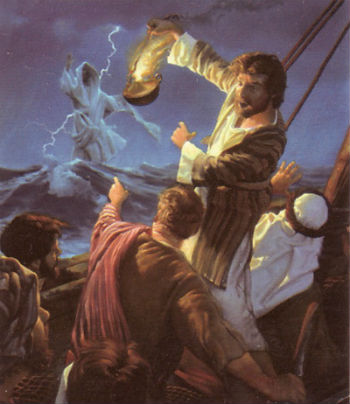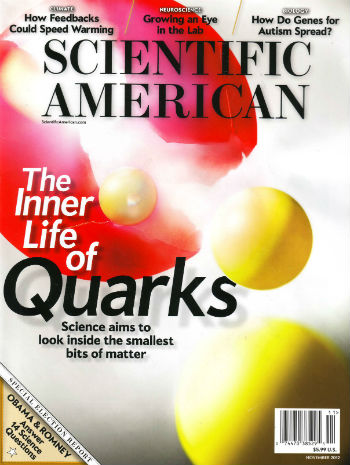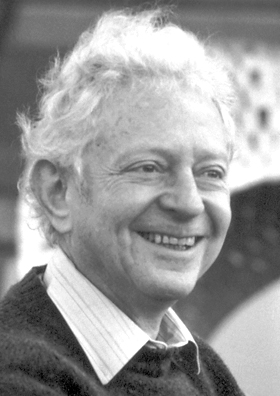Jesus…and the Next Dimension
By Neil Earle
 Miracles are not suspensions of Natural Law as was once argued, but the application of higher principles from outside our 3-D world.
Miracles are not suspensions of Natural Law as was once argued, but the application of higher principles from outside our 3-D world.Many times preachers ask, “Would a miracle strengthen your faith?”
There is always a hankering in Christianity – especially among new Christians – to see signs and wonders. And the Bible does cover this theme as in Acts 4:29 when the early apostles – warned against preaching Jesus and the resurrection – went back to their assembly and asked for special help. The group prayed fervently for God to “stretch out your hand to heal and perform miraculous signs and wonders through the name of your holy servant Jesus.”
This request was honored and healings intensified such that some laid sick people on the streets of Jerusalem so that “at least Peter’s shadow might fall on some of them as he passed by” (Acts 5:15).
Three Prime Periods
Scholars concur that there were three proniunced periods of signs and wonders across Bible history. One was at the time of the Exodus when Moses could seemingly order plagues on Egypt at will. Another was the time of Elijah and Elisha in the 800s BC when Elijah worked seven miracles and Elisha worked fourteen – a double portion.
The third period was the time of Jesus and the early church. But in the Bible signs and wonders are not always portrayed as normative for everyone. Later on in church history St. Paul had to write to encourage Timothy to take some wine “for his stomach’s sake” and his many infirmities (1 Timothy 5:23). Paul left an assistant named Trophimus at Miletus who had gotten sick. Paul himself admits he had a thorn in the flesh that Jesus did not take away.
Though this matter of signs and wonders is hotly debated today, there should be no doubt for Christians about what the greatest sign and wonder was in history. God’s supreme sign to all of us is the resurrection of Jesus Christ from a sealed tomb in Jerusalem after a publically witnessed death at the hands of the professional Romans and his later appearances to his disciples, the men and women who proceeded to “turn the world upside down” (Acts 17:6).
 The strange world of subatomic particles keeps sending scientists back to their flow charts.
The strange world of subatomic particles keeps sending scientists back to their flow charts.
As Anglican churchman Michael Green wrote, “Without faith in the resurrection there would be no Christianity at all.” It is, said Wilbur Smith, “the very citadel of the Christian faith.”
Jesus Changes Time and Space
So here we are. The resurrection of Jesus is essential belief for the Christian. We have written and spoken much about the evidence for Jesus and his resurrection in the past. Today we want to show what theologians such as Thomas Torrance and John McKenna have seen as the cosmic dimensions of Jesus and his resurrection and ascension. The fact is that Jesus in his appearances to Mary Magdalene and the disciples revealed himself to be living in a realm beyond our normal conceptions of time and space. He appeared without notice to the disciples in the upper room. Before that he also disappeared from the two disciples who ate with him at Emmaus who then hurried back to declare to the apostolic band, only to be told, “It is true! The Lord has risen and has appeared to Simon” (Luke 24:33-34).
St Paul wrote about “a spiritual body” sometimes called a “glorious body” and that is what Jesus had after his rising (1 Corinthians 15: 43-44). The risen Lord was not a ghost or a spirit but able to eat and drink as a human being yet appearing and disappearing at will. He had obviously stepped beyond our normal dimensions of time and space. As Torrance and McKenna have explained, it was harder to describe this reality before the discoveries made by Albert Einstein and his generation of physicists. Before the 1900s, the theories of Sir Isaac Newton and his followers held sway – nature was unchanging, fixed in its paths just like the orbits of the planets around the sun, mathematics could calculate such things as the distance from earth to moon, the universe was a predictable as clockwork.
These deductions from Newton’s laws of gravity were major advances in human understanding. They made possible much of the technological world we have today. It helped get us to the moon. But by the late 1800s scientist were noticing anomalies and odd things that didn’t fit the Clockwork Universe. For one thing Venus rotated backward which upset the neat models of the solar system constructed since the late 1600s. For another the planetary orbits were not perfect circles. Newton knew that gravitational perturbations must affect each planet in their separate orbits but assumed God stepped in to straighten it out, claims Robert Irion in National Geographic (March, 2013).
 Niels Bohr: 1922 Nobel prize winner for Quantum Theory – describing the mysterious leaps inside the atom.
Niels Bohr: 1922 Nobel prize winner for Quantum Theory – describing the mysterious leaps inside the atom.
By 1900 scientists were also closing in on the secrets of the atom. The new field of sub-atomic physics opened up ever more fascinating but bizarre realties in the infinitely small world of inner space. Niels Bohr won the 1922 Nobel Prize for discovering that electrons which give off bytes of energy called “quanta” can change their orbits without passing the space in between – the Quantum Leap. Even Einstein initially threw up his hands up declaring he couldn’t believe God played dice with the universe. Soon came smaller realities such as quarks that acted in even more bizarre ways.
Surprise and Changeability
The theological implications of this New Physics was something theologian Tom Torrance zeroed in on: the 20th century was showing that the universe was not only messier than everybody thought, it was also open to surprise and unpredictability. Such things as a resurrection and escaping space and time were feasible. A British writer exclaimed: “After quarks the Virgin Birth is a boodle (a piece of cake!)”
 The High Priest entering the Holy Place once a year typified the Ascension of Jesus Christ into heaven itself (Hebrews 9:12).
The High Priest entering the Holy Place once a year typified the Ascension of Jesus Christ into heaven itself (Hebrews 9:12).
This helps us get a more understandable fix on the events of the resurrection. Jesus tells Mary in the garden not to “hold on to him” because things are different than in the days when she called him “Rabboni” (John 20:16-17). Jesus through the power of the Spirit had entered a new reality beyond our world of time and space, an outside Space-Time event whereby he was able to be with the disciples and be in heaven at the same time. This is impossible in our three-dimensional world but not for a spiritual body such as Jesus now has. Our Lord’s resurrection thus showed God as not limited by any force of nature such as gravity and inertia. And a host of New Testament passages – often couched in mystical terms – showed forth this new dimension of reality.
Here are some of them.
John 14:20, “On that day you will realize that I am in my Father, and you are in me, and I am in you.”
Acts 17:24-28, “The God who made the world does not live in temples made by hands…For in him we live and move and have our being...”
Ephesians 1:22-23 “And God placed all things (literally the universe) and appointed him to be head over everything for the church, which is his body, the fullness of him who fills everything in everything in every way (“all in all” in the King James version).
Ephesians 4:4-6 “There is one body and one Spirit…one God and father of all, who is over all and through all and in all.”
 Professor Leon Lederman: "Every step forward is accompanied by new mysteries."
Professor Leon Lederman: "Every step forward is accompanied by new mysteries."New Heavens/New Earth
Meditating on just one of these passages will show the transcending of Space-Time unleashed at the resurrection of our Lord. A universe which is open to surprise and sudden newness is a world removed from the clockwork model. As one science student says, even clocks have gears going in different direction. “When most of us were growing up the solar system seemed reliable and well-behaved,” says National Geographic,” “But a far more dramatic view has arisen in the past decade or so.”
Right. This cosmos is not as quiet and predictable as we had learned in the 1950s and 1960s. Someone needs to be in charge – now, more than ever! Such overlordship of this Universe was already attested to in Colossians 1:16-17 which says “in Him (the glorified Christ) all things hold together…visible and invisible.” The universe gets stranger and stranger, said Nobel Prize winner Leon Lederman, “The frontiers of science are filled with uncertainty and even confusion. Every step forward is accompanied by new mysteries.”
It is no surprise to Christians that the Bible sets forth the Supreme Overlordship of Jesus Christ over all dimensions of reality, his ability to hold all things together and then eventually initiate a new cosmos (Revelation 22) though this world should fall apart from its own contradictions. The long-term cosmic picture thus reflects Christian hope, a reality more than hinted at in the events surrounding Jesus' resurrection appearances and his ascension to rulership in heaven. We wait for his majestic appearance and the final unveiling to us of what happened at Creation, way back there, in the beginning.